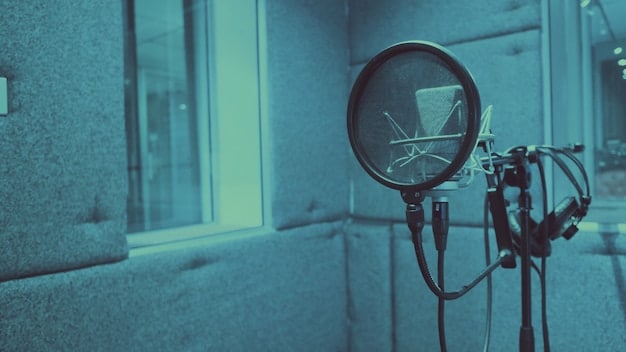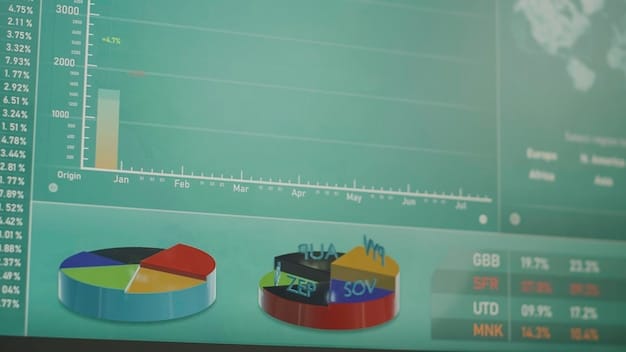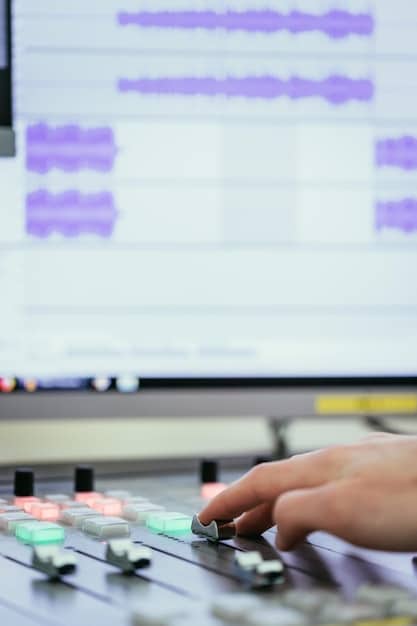Podcast Costs Soaring: Beat Inflation & Optimize Your Budget

Podcast production costs are rising due to inflation, with editing and hosting fees increasing by approximately 7%. Podcasters can optimize their budgets by exploring cost-effective software, streamlining workflows, and considering DIY solutions for certain tasks.
Are your podcast production costs on the rise? You’re not alone. Inflation is impacting every corner of the economy, and podcasting is no exception. Editing and hosting fees have seen a noticeable increase, putting a strain on many podcasters’ budgets.
Understanding the Inflationary Pressures on Podcast Production
Inflation is a key economic factor which can impact the costs of running your podcast. In general, rising prices for essentials, services, and production tools eat into your budget and require you to look for creative solutions to keep your podcast afloat.
The Economic Landscape Affecting Podcasting
Numerous economic indicators suggest that inflation will be an ongoing challenge. Rising energy costs, supply chain disruptions, and increased labor expenses are all contributing to the upward pressure on prices. These macro-economic factors translate directly into higher costs for podcasting essentials.
Specific Cost Increases in Podcasting
While inflation affects many sectors, podcasting sees unique impacts, primarily in the costs associated with post-production and distribution. Editing software subscriptions, hosting platform fees, and even the cost of virtual assistant services have increased.
- Software Subscriptions: Monthly or annual fees for audio editing software have steadily increased.
- Hosting Fees: Many hosting platforms have adjusted their pricing to reflect increased operational costs.
- Freelancer Rates: Editors, sound engineers, and other freelancers are charging more for their services.
Ultimately, inflationary pressures may force podcasters to reduce the length of episodes or hire fewer people if they do not make adjustments to their content strategy.

To avoid this situation, we’ll explore effective strategies for reducing your expenditures in upcoming steps.
Cost-Effective Software and Tools for Podcast Editing
One of the most significant expenses for many podcasters is audio editing software. However, there are several cost-effective alternatives to expensive professional suites that can help you save money without sacrificing quality.
Free and Open-Source Options
Free and open-source software has come a long way in recent years. Tools like Audacity and GarageBand (for macOS users) offer a wide range of features sufficient for most podcast editing needs.
Subscription Bundles and Discounts
Consider exploring subscription bundles that offer multiple software tools at a discounted rate. Many companies offer packages that include audio editing, noise reduction, and other useful tools. Furthermore, check for educational discounts or promotional offers that can reduce your overall cost.
Remember that while having the best gear is nice, your listeners are interested in the content of your podcast, not necessarily highly produced audio.
- Audacity: A free, open-source audio editor with a user-friendly interface.
- GarageBand: A free audio production suite for macOS users, ideal for beginners.
- Adobe Creative Cloud: Offers discounted rates for students and educators.
Reducing costs in your tech stack can allow you to focus on other important things related to content creation.
Streamlining Your Podcast Workflow for Efficiency
Efficiency is key to controlling costs. The more efficient your podcast workflow, the less time and money you’ll spend on each episode. Streamlining your workflow involves optimizing every step of the production process, from recording to publishing.
Batch Recording and Editing
Batch recording involves recording multiple episodes in a single session. This can save time and reduce setup costs. Similarly, batch editing allows you to edit multiple episodes consecutively, improving focus and reducing downtime between tasks.
Creating Templates and Presets
Developing templates and presets for your audio editing software can significantly speed up the editing process. Templates can include pre-configured settings for EQ, compression, and noise reduction, ensuring consistency across episodes.
Reducing repetitive tasks is critical, especially when managing expenses.

- Pre-Production Planning: Thoroughly plan each episode to minimize recording time.
- Efficient Editing Techniques: Learn keyboard shortcuts and efficient editing techniques to reduce editing time.
- Automation Tools: Use automation tools for tasks such as file naming and format conversion.
With careful planning and resource management, creating efficiencies in your podcast creation can lead to massive financial gains in the long run.
DIY Solutions vs. Outsourcing: Making the Right Choice
Deciding whether to handle tasks yourself or outsource them can significantly impact your podcast production costs. While outsourcing can free up your time, DIY solutions can save you money. The key is to strike the right balance based on your skills, time constraints, and budget.
Assessing Your Strengths and Weaknesses
Start by evaluating your skills and comfort level with different tasks. If you’re proficient in audio editing and enjoy it, handling this task yourself makes sense. However, if you find editing tedious and time-consuming, outsourcing might be a better option.
When to Outsource
Consider outsourcing tasks that require specialized skills or equipment that you don’t possess. This could include tasks like sound design, music composition, or complex audio restoration.
The more time you dedicate, the less money is spent.
- Time vs. Money: Evaluate whether the time saved by outsourcing is worth the cost.
- Skill Set: Consider your capabilities and decide if you have the ability to complete the tasks yourself.
- Quality Control: Weigh the pros and cons of outsourcing on the final product and whether you are comfortable relinquishing creative control.
Outsourcing is a critical part of managing costs. However, that doesn’t mean it needs to be done all of the time.
Monetization Strategies to Offset Production Costs
Monetizing your podcast can help offset production costs and even turn your podcast into a profitable venture. There are many different ways you can approach monetization from leveraging sponsorships to creating additional content.
Sponsorships and Advertising
Sponsorships and advertising are common monetization strategies for podcasters. Reach out to businesses that align with your podcast’s audience and offer them advertising opportunities.
Affiliate Marketing
Affiliate marketing involves promoting products or services and earning a commission for each sale made through your unique affiliate link. This can be a lucrative way to monetize your podcast, especially if you review products or services related to your niche.
Monetization can be a great way to support a growing enterprise.
- Audience Alignment: Ensure that sponsorships and affiliate partnerships are relevant to your audience.
- Multiple Streams of Income: Explore multiple monetization methods to diversify your revenue streams.
- Transparency: Disclose any sponsorships or affiliate relationships to maintain trust with your audience.
Creating sustainable business models means you can continue to produce and create great content.
Negotiating Rates with Freelancers and Service Providers
Negotiating rates with freelancers and service providers can significantly reduce your podcast production costs. Don’t be afraid to negotiate prices and explore different options to find the best deal.
Researching Market Rates
Before negotiating, research current market rates for the services you need. This will give you a baseline for what’s reasonable to pay and help you make informed offers.
Building Long-Term Relationships
Building long-term relationships with freelancers and service providers can lead to more favorable rates. Offer repeat business and consistent work in exchange for discounted pricing.
Don’t be afraid to stand up for getting a good price.
- Be Prepared to Walk Away: Be willing to explore other options if a freelancer or service provider is unwilling to negotiate.
- Clearly Defined Scopes: Make sure there is transparency in the amount of work expected and the hours in which it should be completed.
- Value Exchange: Consider offering something in return for lower rates, such as promotional opportunities or testimonials.
Negotiating can be uncomfortable, but it’s critical in an inflationary environment.
| Key Point | Brief Description |
|---|---|
| 💰 Cost-Effective Software | Use free or discounted software to cut editing expenses. |
| 💨 Streamline Workflow | Batch recording and editing improve efficiency. |
| 🤝 Negotiate Rates | Research market rates and build relationships for better pricing. |
Retractable FAQs
▼
The primary drivers are inflated software subscription fees, rising hosting costs, and higher freelancer rates due to general economic inflation.
▼
Audacity and GarageBand are excellent free options that provide a wide range of tools suitable for most podcasters’ editing needs.
▼
Batch recording episodes, creating editing templates, and using automation tools can cut down on both time and costs.
▼
DIY fits when you have time and skills; outsource tasks requiring specialized tools or expertise that isn’t part of your skillset.
▼
Affiliate marketing involves promoting products through special links; you earn a percentage from each sale made through your unique link.
Conclusion
Navigating increasing podcast production costs requires a multifaceted approach. By utilizing cost-effective tools, streamlining workflows, strategically outsourcing, and exploring various monetization methods, podcasters can maintain quality while effectively managing their budgets.





